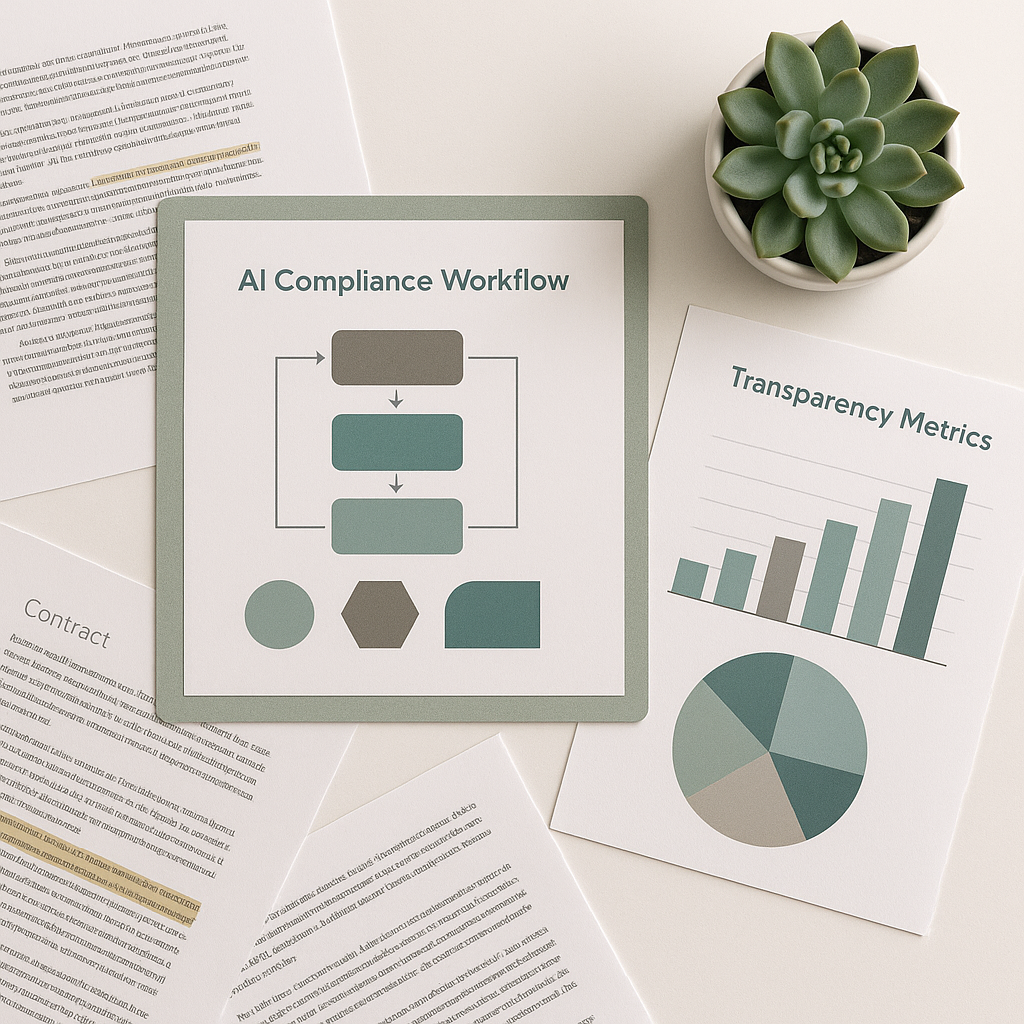- December 18, 2025
- 5 min read
Explore why scaling LLMs breaks traditional CRMs and how composable AI stacks solve integration, latency, and compliance challenges for RevOps.



Look, the EU AI Act isn't some vague regulation looming in the future anymore—it’s live, and enforcement begins this month. Penalties for non-compliance can hit €35 million or 7% of your turnover. At the same time, Meta announced it will personalize ads and content using users' interactions with its generative AI starting December 16, 2025—an enormous platform-level shift. This means every agency running campaigns with AI personalization must reassess practices immediately or risk harsh penalties and client backlash.
Combine that with Salesforce Einstein, HubSpot Copilot, and eBay integrating agentic AI automation into marketing workflows. The result? More complexity, more risk — unless you have a clear playbook to navigate compliance, privacy, vendor management, and measurement.
First off, map out all AI models powering your campaigns and the data feeding them. This means:
This inventory forms the backbone of compliance documentation, risk assessment, and transparency disclosures.
Your client contracts must explicitly disclose AI use, data provenance, and the limitations of AI-generated content or personalization. Vendor agreements need revised Data Processing Addendums (DPAs) incorporating EU AI Act clauses—mandatory for third-party AI suppliers.
Pay special attention to Service Level Agreements (SLAs) that now must cover AI-specific risks like bias, hallucinations, and regulatory compliance, not just uptime.
Transparency isn’t just about telling clients AI is in use. You must enable traceability of AI decisions across campaign touchpoints:
Technically, this means integrating logging mechanisms within your data and AI infrastructure, ideally automated through your CRM or RevOps stack.
With Meta notifying users starting October 7 and personalization effective December 16, your campaigns must incorporate clear opt-in/opt-out flows and disclosures specially tailored for AI-personalized ads and content. This is non-negotiable under GDPR and the EU AI Act transparency rules.
Make these user controls easy to find, understand, and modify. Your compliance tech stack should support real-time updates to user preference data shared with AI and ad platforms.
AI marketing personalization without bias mitigation risks discrimination and regulatory backlash. Routinely test your AI models against bias, safety, and fairness benchmarks:
Bias testing not only protects your agency but can differentiate your services by offering clients ethical AI assurance.
AI is increasingly automating actions in CRM and RevOps—from lead scoring to campaign triggers. But automation without controls can amplify errors or compliance incidents.
Implement robust escalation protocols that flag anomalies or high-risk AI-driven decisions for human review, ensuring proper human oversight as mandated by the EU AI Act.
This also means keeping meticulous audit logs and integrating automated campaigns with compliance workflows.
This compliance + personalization convergence is more than a checklist—it’s a strategic pivot. Agencies that embed these six steps will:
Ignoring these triggers won’t just cost you in fines—it risks losing client trust in an era where privacy and fairness are paramount.
The EU AI Act enforcement from October 2025 carries steep penalties—up to €35 million or 7% of global turnover—for agencies failing to meet transparency, data quality, and human oversight requirements in AI-driven marketing services. Ignorance is no defense as regulators tighten their grip on AI compliance worldwide.
Don't think about these steps as just compliance tasks. This is your opportunity to build AI marketing practices that clients trust and competitors envy. Move fast, start with the data and model inventory, update contracts for transparency, and put bias testing plus user controls at the core. As Meta’s AI personalization reshapes ads and content, and CRM automation deepens, your agency’s reputation and ROI hang in the balance. The agencies who act decisively now won’t just survive October 2025—they’ll set the pace for the entire AI-powered marketing industry.
Quick peek behind the curtain: This 1,600-word breakdown on navigating the EU AI Act and Meta personalization shockwave wasn’t crafted by a team toiling through late nights. Instead, our AI workflow handled every step—starting with Tavily scanning 30+ authoritative reports and case studies on AI regulation, marketing personalization, and CRM automation as of 2025.
GPT-4 parsed complex legal and tech findings, synthesized tactical 6-step frameworks, and structured content with actionable insights tailored for marketing agencies. Meanwhile, AI-powered SEO optimization ensured the post aligns perfectly with what decision-makers search for. The entire workflow—research, writing, editing, SEO, and Webflow publishing—ran seamlessly in under two minutes with human review only for final voice tuning.
Why show you this? Because this automation pipeline reflects the very future of marketing operations: data-driven, compliance-oriented, and scalable without sacrificing strategic depth. If our system can generate expert-level AI insight at this speed and quality, imagine what similar automation can unlock for your client campaigns or internal processes.


Explore why scaling LLMs breaks traditional CRMs and how composable AI stacks solve integration, latency, and compliance challenges for RevOps.


Unlock hidden margin with AI-driven pricing pilots for franchises & agencies. Learn the 60-day playbook to optimize revenue without raising prices.


Discover how privacy-first, on-device multimodal AI accelerates quoting and inspection for franchises and home services, boosting margins and booking velocity.
